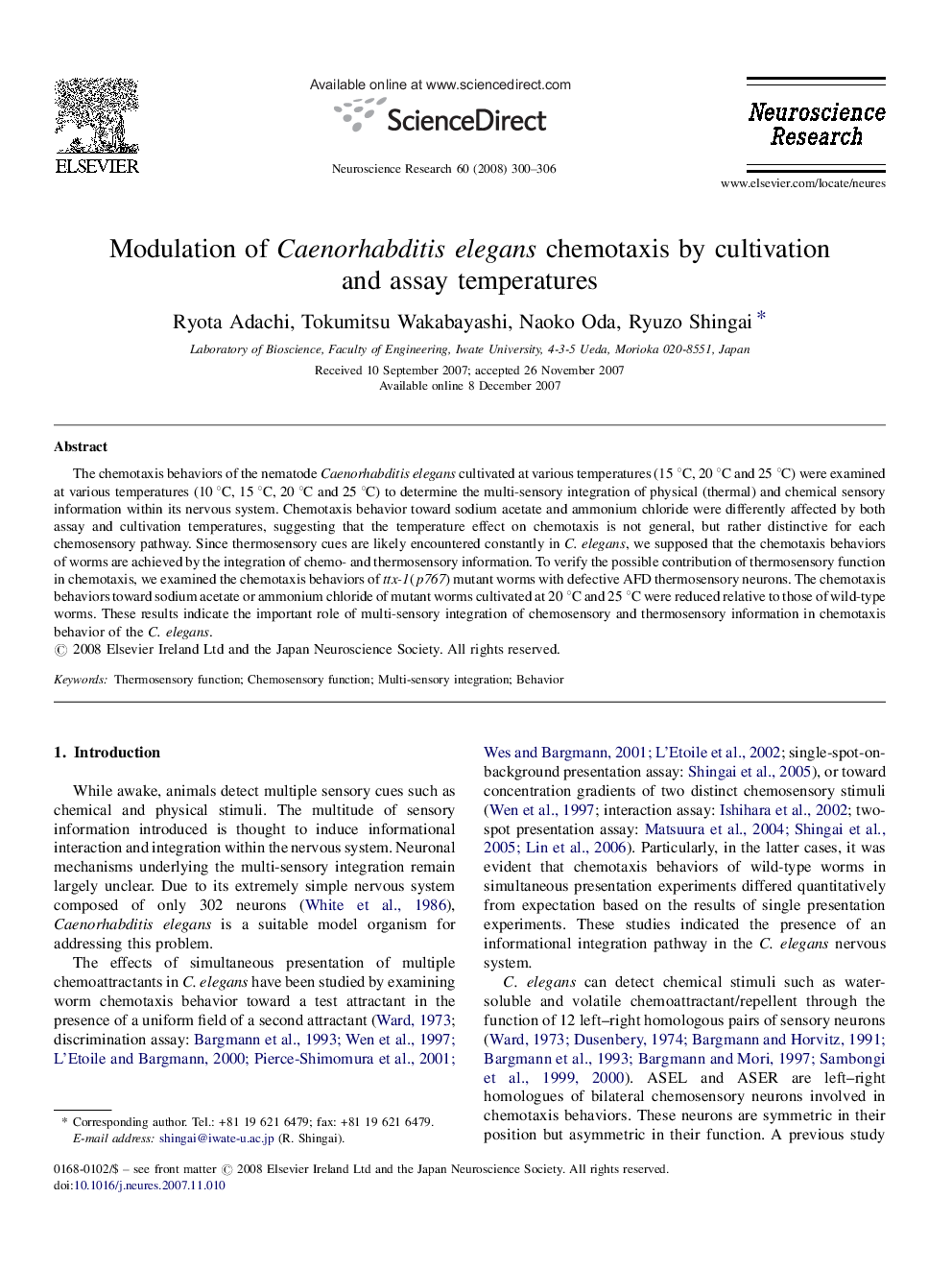| Article ID | Journal | Published Year | Pages | File Type |
|---|---|---|---|---|
| 4352658 | Neuroscience Research | 2008 | 7 Pages |
The chemotaxis behaviors of the nematode Caenorhabditis elegans cultivated at various temperatures (15 °C, 20 °C and 25 °C) were examined at various temperatures (10 °C, 15 °C, 20 °C and 25 °C) to determine the multi-sensory integration of physical (thermal) and chemical sensory information within its nervous system. Chemotaxis behavior toward sodium acetate and ammonium chloride were differently affected by both assay and cultivation temperatures, suggesting that the temperature effect on chemotaxis is not general, but rather distinctive for each chemosensory pathway. Since thermosensory cues are likely encountered constantly in C. elegans, we supposed that the chemotaxis behaviors of worms are achieved by the integration of chemo- and thermosensory information. To verify the possible contribution of thermosensory function in chemotaxis, we examined the chemotaxis behaviors of ttx-1(p767) mutant worms with defective AFD thermosensory neurons. The chemotaxis behaviors toward sodium acetate or ammonium chloride of mutant worms cultivated at 20 °C and 25 °C were reduced relative to those of wild-type worms. These results indicate the important role of multi-sensory integration of chemosensory and thermosensory information in chemotaxis behavior of the C. elegans.
